Motivation and objectives
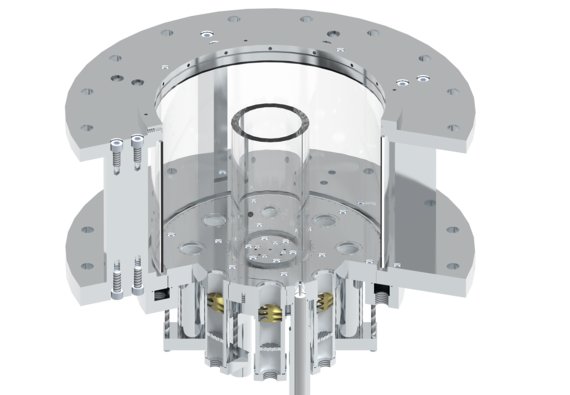
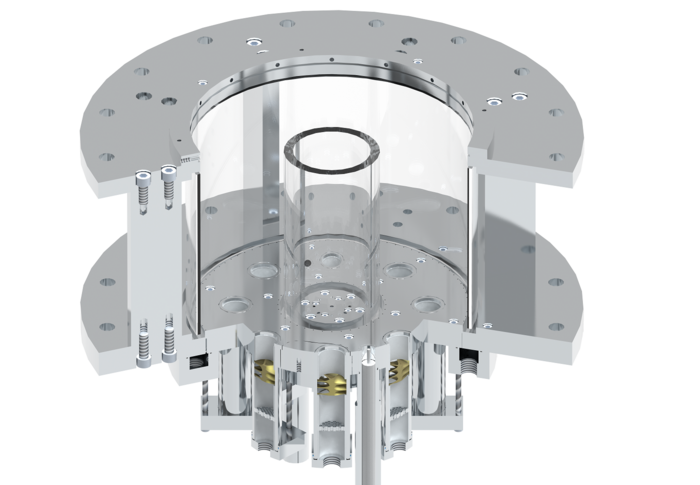
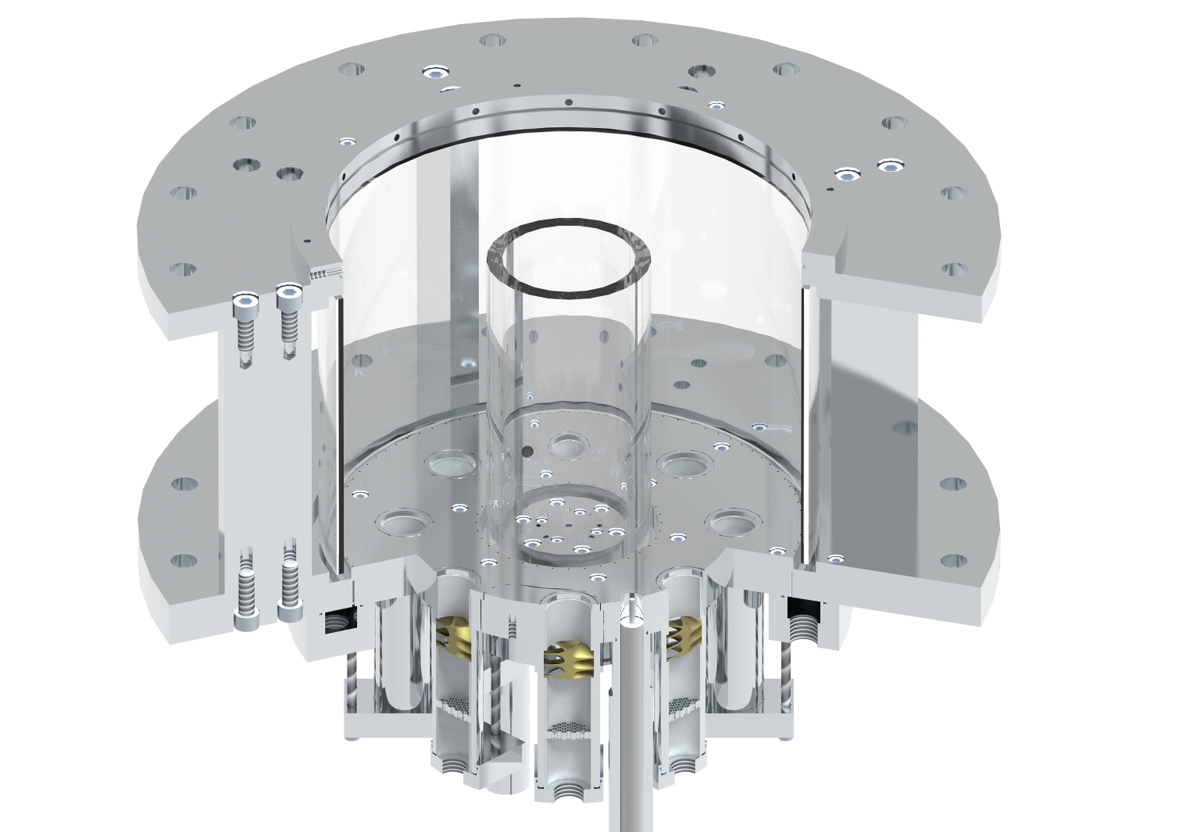
Defects in combustion chambers of aircraft engines reduce the performance and represent an increased stress on the turbine. The exhaust jet provides information about the engine’s state and helps to plan the regeneration process to reduce time and costs during maintenance, repair and overhaul. The subprojects A3 and A4 cooperate to achieve this aim. While the influences of turbine defects on the exhaust jet are investigated in subproject A3, subproject A4 focuses on the defects in the combustion chamber and their effects. For the detection of combustor defects, species concentration and emission measurement techniques will be used, which allow a comprehensive analysis of the engine and the current operating condition.
Results
In the first funding period of the project, the feasibility and function of an exhaust gas analysis was initially demonstrated. Two experimental combustion chambers were developed to perform experimental investigations at normal operation and defects. Numerical studies have been performed on real aircraft engines and the model combustion chamber to simulate the flow and reactive processes using CFD. The simulated data from the calculations was successfully validated with measurements of flow velocity and emissions within the combustion chamber. Numerical studies were performed for the reference and defect cases.
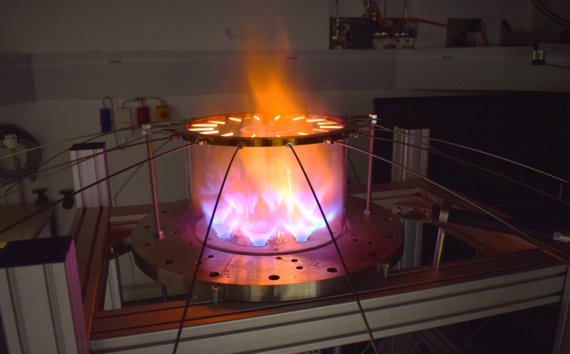
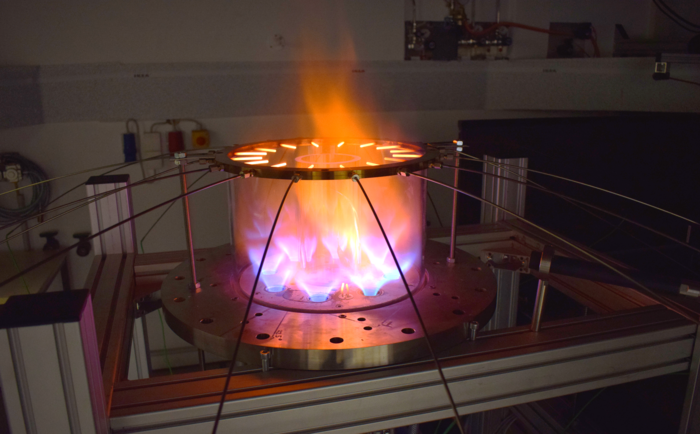
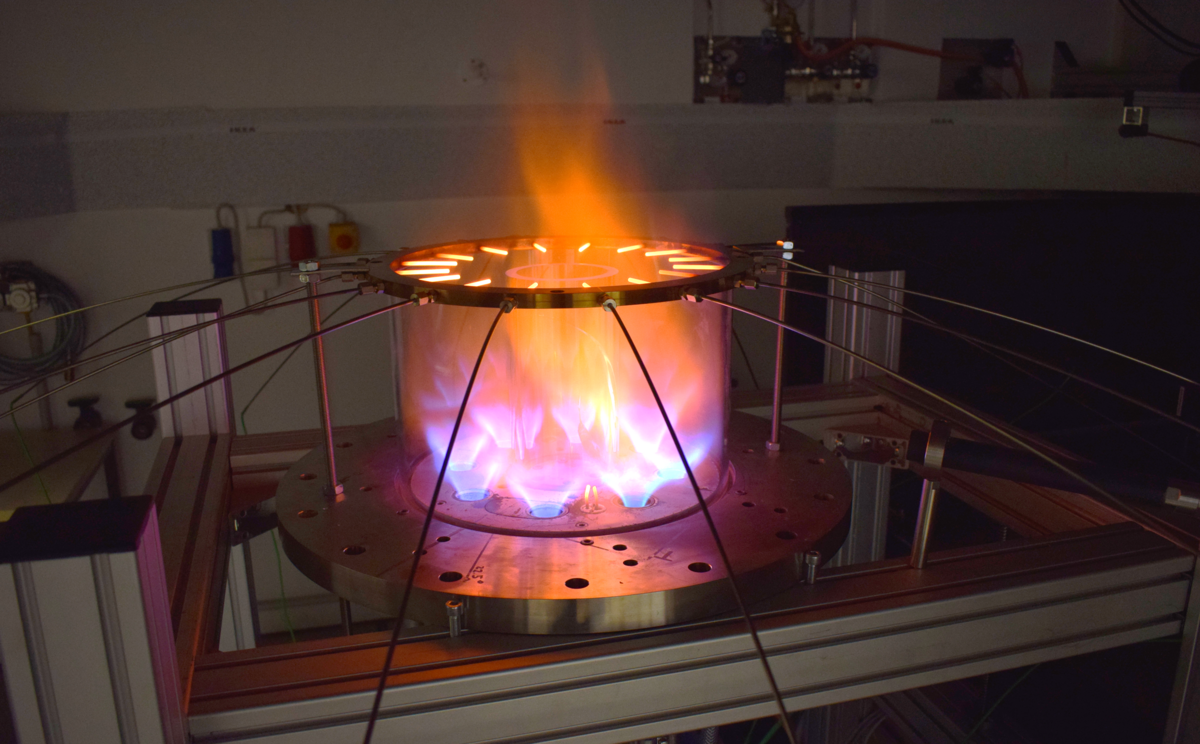
Current research and outlook
For the next steps, it is necessary to quantify the turbulent mixing of defect signatures in combustion chambers. The mixing reduces the information content about the position of the defect and the influence on the exhaust jet behind the engine. This limits the applicability of the defect detection with the methodology of the exhaust jet analysis. The mixing of defect signatures occurs through diffusive processes that blur temperature and gas concentration patterns. The complex diffusion is one possible approach and will be further investigated in subproject A6 with the experience gained in project A4.
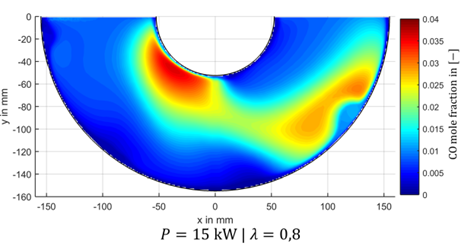


Subproject leader
30823 Garbsen
30823 Garbsen
Publications
International Scientific Journal Paper, peer-reviewed
-
(2017): Failure Detection in an Annular Combustion Chamber with Experimental and Numerical Methods, J Aeronaut Aerospace Eng 6:193
DOI: 10.4172/2168-9792.1000193 -
(2016): Automatic Detection of Defects in a Swirl Burner Array Through an Exhaust Jet Pattern Analysis, In: J. Eng. Gas Turbines Power 139 (3)
DOI: 10.1115/1.4034449
International Conference Paper, peer-reviewed
-
(2016): Automatic Detection of Defects in an Annular Swirl Burner Array Through an Exhaust Jet Pattern Analysis, Proceedings of the ASME Turbo Expo 2016, S. 1–10
-
(2016): Early Defect Detection on an annular Swirl-Burner-Array by Optical Measuring Exhaust Gases and Numerical Analysis, In: Proceedings of the ASME Turbo Expo 2016, June 13-17, 2016, Seoul, South Korea
-
(2013): Impact of Defects and Damage in Aircraft Engines on the Exhaust Jet, Proceedings of the ASME Turbo Expo, 3-7 June 2013, San Antonio, USA, GT2013-95709
International Conference Paper, not peer-reviewed
-
(2018): Experimental Defect Detection in a Swirl-Burner Array Through Exhaust Jet Analysis, 2018 AIAA Aerospace Sciences Meeting, AIAA SciTech Forum, 8-12 January 2018, Kissimmee, Florida, USA, AIAA2018-0303
DOI: 10.2514/6.2018-0303 -
(2017): Approach of Future Defect Detection in Aircraft Engines by Optical Measuring Exhaust Gases, Combustion Institute (Hg.): Proceedings of the 8th European Combustion Meeting
-
(2015): Influence of Combustion Chamber Defects on the Forced Response Behavior of Turbine Blades. , Proceedings of the 14th International Symposium on Unsteady Aerodynamics, Aeroacoustics & Aeroelasticity of Turbomachines, ISUAAAT14, 8-11 September 2015, Stockholm, Schweden, S. 9
-
(2013): Influence of Combustion Chamber Disturbances to Patterns in the Hot Gas Path, European Combustion Meeting 2013
National Conference Paper, peer-reviewed
-
(2017): Experimentelle und numerische Untersuchungen zur Detektion von Defekten an einer Modellbrennkammer, 28. Deutscher Flammentag, VDI-Berichte 2302, S. 445-456
National Conference Paper, not peer-reviewed
-
(2015): Fehlerfrüherkennung von Brennkammerdefekten einer Ringbrennkammer aus einem 8-Drallbrenner-Array mittels optischer Abgasstrahlanalyse und numerischer Zuordnung, 27. Deutscher Flammentag Verbrennung und Feuerung, Düsseldorf: VDI-Verlag, S. 393–402
-
(2015): Correlation of Defects in an Annular Swirl-Burner-Array by Optical Measuring Exhaust Gases and Numerical Analysis, 64. Deutscher Luft- und Raumfahrtkongress 2015, 22-24 September 2015, Rostock
-
(2013): Detektion von Triebwerksbrennkammerfehlern durch Analyse von Temperatur- und Speziesprofilen der Heißgase einer Modell-Brennkammer, Deutscher Flammentag 2013
Dissertationen
-
(2018): Methodik einer Zustandsbeurteilung von Triebwerksbrennkammern, TEWISS-Verlag: Berichte aus dem ITV, Band 1/2018
ISBN: 978-3-95900-228-8




